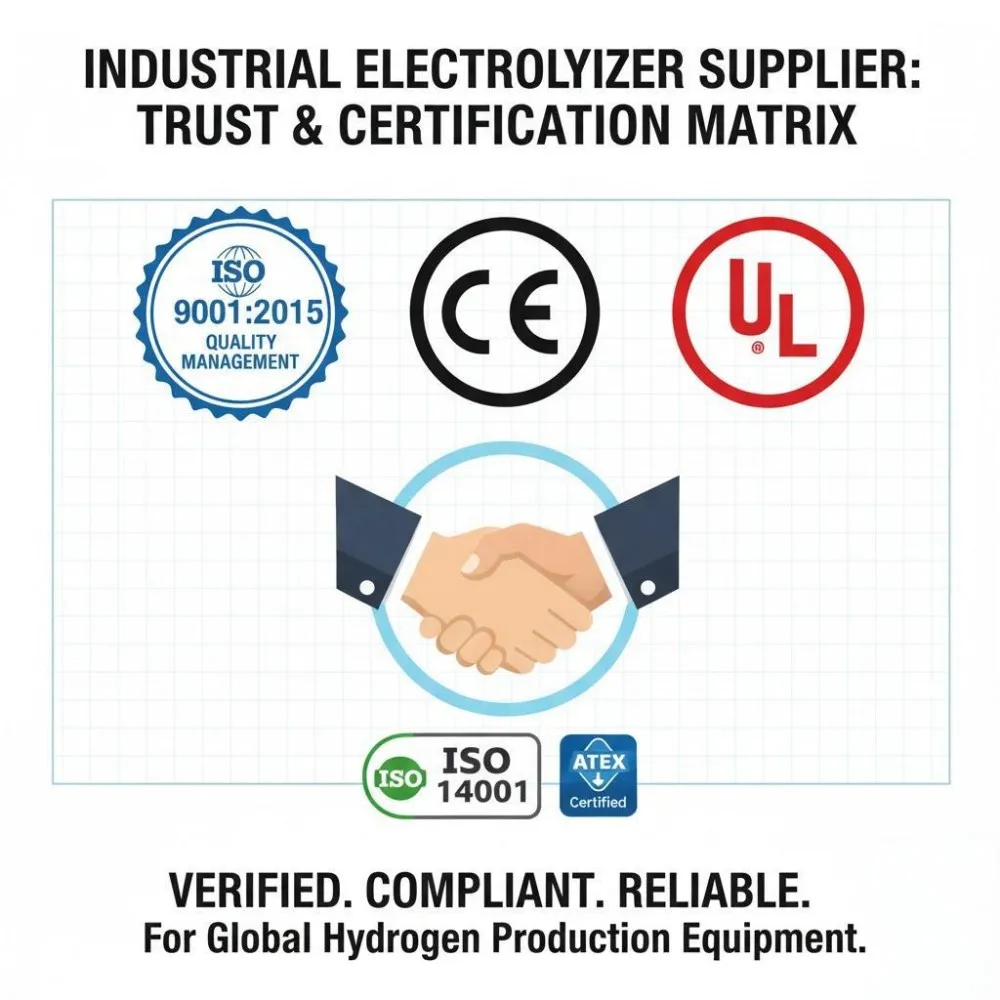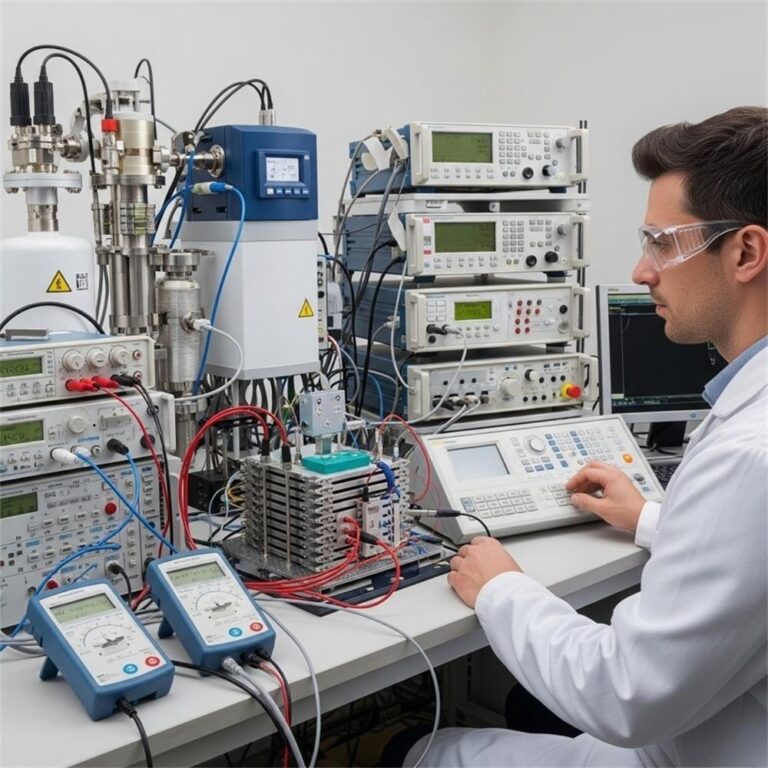High-Capacity 5000ml PEM Electrolyzer for Hydrogen Demand
Explore the power of 5000ml PEM electrolyzer hydrogen generators. Learn about their high-capacity capabilities, applications in fuel cell development and industrial processes, PEM technology advantages, and maintenance for optimal hydrogen production.
I. Introduction
With global emphasis shifting toward sustainable and green energy sources, hydrogen has emerged as a major player in the clean energy revolution. According to the International Energy Agency, demand for hydrogen could increase sixfold by 2050. This surge is powered by industries seeking low-emission alternatives and technologies like fuel cells becoming more mainstream.
Among various hydrogen production methods, Proton Exchange Membrane (PEM) electrolysis has gained attention for its efficiency, safety, and compact design. It uses electricity to split water into hydrogen and oxygen, offering a clean and scalable solution.
As industries move from small-scale hydrogen setups to more robust solutions, high-capacity hydrogen generators like the 5000ml PEM electrolyzer hydrogen generator are meeting the demand. Designed for consistent and high-output performance, these units are vital for applications ranging from R&D labs to industrial fuel cell deployment.
In this article, we’ll dive deep into what makes the 5000ml PEM electrolyzer generator a go-to option, its key benefits, industry applications, core components, efficiency benchmarks, and maintenance needs.
II. What is a 5000ml PEM Electrolyzer Hydrogen Generator?
PEM Electrolysis Explained
PEM (Proton Exchange Membrane) electrolysis is a type of water electrolysis that uses a solid polymer membrane as the electrolyte. This advanced technique ensures high hydrogen purity (typically >99.999%) while requiring fewer moving parts compared to traditional alkaline electrolysis systems.
Core Functionality and Parts
The generator contains a PEM electrolyzer stack that houses multiple cells, each comprising:
- Anode and cathode electrodes
- Proton exchange membrane (usually Nafion or similar)
- Gas diffusion layers
- Bipolar plates
Water is fed into the anode side, where it splits into oxygen, electrons, and protons. Protons pass through the membrane, combine with electrons at the cathode, and form hydrogen gas.
What Does “5000ml” Mean?
The “5000ml” label typically refers to the hydrogen production rate, specifically 5000 milliliters (or 5 liters) of hydrogen gas per minute under standard conditions. That equates to 300 liters per hour, making it suitable for medium to high-capacity needs.
Common Use-Cases
This production capacity makes the system ideal for:
- Prototyping in fuel cell research labs
- On-site hydrogen supply for sensitive industrial processes
- Pilot hydrogen refueling setups
- Advanced educational or defense technology demonstrations
III. Applications for High-Capacity Hydrogen Generators
Research and Development
In the world of scientific research, consistency and purity of hydrogen are paramount:
- Fuel cell prototyping: These generators provide a steady supply for testing.
- Materials synthesis: Hydrogen acts as a reducing agent in many experimental setups.
- Catalyst development: Studies on reaction kinetics rely on controlled hydrogen environments.
Industrial Applications
Hydrogen finds growing use in high-tech industries:
- Semiconductor manufacturing: For oxide removal and protective atmospheres.
- Power plant cooling: Hydrogen cools turbines more effectively due to its thermal conductivity.
- Metal processing: Used for annealing, welding, and brazing with clean, oxygen-free atmospheres.
Fuel Cell Development
The 5000ml capacity is particularly well-suited to:
- Fuel cell stack testing
- Performance benchmarking
- Prototype vehicle or drone fuel systems
Niche Applications
Less mainstream but equally important areas include:
- Balloon inflation for meteorological studies
- Cleanroom environments needing ultra-pure hydrogen for calibration
- Academic instruction in hydrogen systems and clean tech
Continuing the article from Section IV:
IV. Advantages of PEM Technology in High-Capacity Generators
PEM (Proton Exchange Membrane) technology is a major driver behind the performance and reliability of modern hydrogen generators. For high-capacity systems like the 5000ml PEM electrolyzer hydrogen generator, these advantages are particularly significant.
High Purity Hydrogen Production
PEM electrolyzers consistently deliver ultra-pure hydrogen—often exceeding 99.999% purity—without the need for additional purification stages. This is crucial for industries like semiconductor manufacturing or fuel cell R&D, where impurities can compromise performance or product integrity.
Compact Design and Scalability
Thanks to the compact nature of PEM stacks, high-capacity systems don’t require massive footprints. This space-saving design allows facilities with limited area—like mobile labs or pilot fuel cell production lines—to deploy hydrogen generation in-house. Additionally, systems can be modular and scalable, allowing for capacity upgrades without overhauling infrastructure.
Fast Response Time
PEM electrolyzers respond quickly to fluctuating power inputs and demand changes. This is particularly useful for renewable energy integration, where solar or wind sources may have variable outputs. Rapid startup and shutdown capabilities also reduce energy waste during idle periods.
Safety Features
Compared to other electrolysis methods, PEM systems are inherently safer due to:
- Lower operating temperatures
- Sealed cell architecture
- Integrated pressure sensors and safety valves
These design choices reduce the risk of hydrogen leakage or system failure, making them ideal for both industrial and lab environments.
Durability and Performance Under High Load
Modern PEM electrolyzers are engineered for durability, with robust membranes and corrosion-resistant materials. Even under high hydrogen output (like 5000ml/min), the system maintains consistent performance over thousands of operational hours.
V. Key System Components
Understanding the core components of a 5000ml PEM electrolyzer hydrogen generator helps operators maintain, troubleshoot, and scale these systems efficiently.
PEM Electrolyzer Stack
This is the heart of the system. Comprising several electrochemical cells, it’s where the actual water splitting happens. Each cell includes:
- Anode and cathode
- Membrane (typically Nafion)
- Conductive plates and seals
Proper hydration and pressure management are critical for stack longevity and efficiency.
Water Purification System
PEM systems require ultra-pure deionized water to prevent membrane fouling and ion contamination. The integrated purification unit typically includes:
- Reverse osmosis filters
- Deionization cartridges
- UV sterilizers (optional)
Maintaining water quality is vital for consistent hydrogen output and long membrane life.
Power Supply and Control System
These electronics regulate voltage and current to each cell in the stack. Key features include:
- Constant current/voltage settings
- Remote monitoring and diagnostics
- Overload and surge protection
Advanced models allow integration with renewable sources or smart grid systems.
Hydrogen Storage System (Optional)
Depending on application, the hydrogen can be:
- Used immediately (“on-demand”)
- Stored in pressurized tanks
- Stored in metal hydride or solid-state solutions
Storage units come with safety valves, pressure regulators, and gas flow meters.
Monitoring System
Real-time data tracking ensures safe and efficient operation. Most systems offer:
- LCD or touchscreen panels
- Remote access via web or app
- Alerts for temperature, pressure, flow rate, and voltage anomalies
VI. Efficiency Metrics
Optimizing efficiency is essential for reducing operational costs and maximizing hydrogen yield. Several performance metrics help gauge the effectiveness of a 5000ml PEM electrolyzer system.
Energy Consumption
A common measure is kilowatt-hours per cubic meter of hydrogen (kWh/m³). Most high-efficiency PEM systems operate between 45-55 kWh/kg H₂, but this can vary depending on:
- Water quality
- Ambient temperature
- Operating pressure
Current Density
Current density (A/cm²) indicates the amount of current applied per unit area of membrane. Higher current densities typically increase hydrogen production but may also increase heat and stress on the membrane, affecting longevity.
Voltage Efficiency
This measures the ratio between theoretical voltage (1.23V) and actual operating voltage (usually 1.6–2.0V). Closer to the theoretical value means better energy efficiency.
Faradaic Efficiency
Faradaic efficiency refers to how effectively electrical current is converted into hydrogen, often exceeding 95% in modern PEM systems. Losses occur due to:
- Gas crossover
- Side reactions
- Membrane degradation
Factors Affecting Efficiency
- Temperature: Moderate heat (~60–80°C) improves ion mobility.
- Pressure: Higher pressures can improve gas purity but may strain system seals.
- Water Quality: Impurities reduce membrane life and increase resistance.
- Membrane Aging: Over time, even durable membranes exhibit increased ohmic resistance.
VII. Maintenance Requirements
Routine maintenance ensures the longevity and reliability of your hydrogen generator. While PEM systems are known for being low-maintenance, periodic checks are still essential.
Regular Inspections
- Check for leaks, corrosion, or abnormal noises
- Ensure electrical connections are secure
- Monitor gas output and system logs for anomalies
Monthly or biweekly visual inspections are generally recommended.
Electrolyte and Water Management
Although PEM electrolyzers use solid membranes (not liquid electrolytes), the quality and quantity of feed water must be closely monitored:
- Replace deionizer cartridges when saturation indicators show
- Refill water tanks with only deionized or distilled water
- Clean water lines to prevent biofilm or sediment buildup
Stack Replacement and Service Life
Most high-performance stacks last between 10,000 to 20,000 hours, depending on usage. Signs you may need replacement include:
- Reduced gas output
- Increased energy consumption
- Decreased voltage efficiency
Troubleshooting Common Issues
| Problem | Cause | Solution |
|---|---|---|
| Low hydrogen output | Fouled membrane | Replace stack or clean filters |
| Water not entering stack | Pump or valve failure | Inspect and replace faulty parts |
| Voltage spikes | Power supply instability | Calibrate or replace control system |
| Unusual noise or odor | Gas leaks or overheating | Shut down and inspect system |
VIII. Conclusion
The 5000ml PEM electrolyzer hydrogen generator is a powerhouse for medium- to high-capacity hydrogen production. Whether you’re supporting fuel cell development, industrial operations, or advanced R&D, this system offers:
- High-purity hydrogen
- Fast, on-demand production
- Compact and modular design
- Scalability and safety
By understanding its components, monitoring key efficiency metrics, and following proper maintenance protocols, users can unlock years of efficient, clean hydrogen generation.
As the world continues its transition toward green hydrogen, solutions like the 5000ml PEM generator will play an increasingly vital role in bridging the energy gap—one molecule at a time.
Frequently Asked Questions (FAQs)
1. What is the main advantage of using a PEM electrolyzer? PEM electrolyzers produce ultra-pure hydrogen with high efficiency and fast response times, making them ideal for dynamic energy systems and research labs.
2. How much hydrogen does a 5000ml electrolyzer produce per day? At 5000ml per minute, that’s 300 liters per hour or 7,200 liters (7.2m³) per day under continuous operation.
3. Is the 5000ml PEM generator suitable for outdoor use? Yes, but it must be housed in a weatherproof, ventilated enclosure to protect electronics and ensure safety.
4. Can I use tap water in the system? No. Only deionized or distilled water should be used to protect the membrane and maintain high purity output.
5. How long does the PEM stack last? Typically between 10,000 to 20,000 hours, depending on maintenance and usage conditions.
6. Is hydrogen storage necessary? Not always. Many applications use the hydrogen “on-demand,” but storage is useful for buffering or transport needs.







